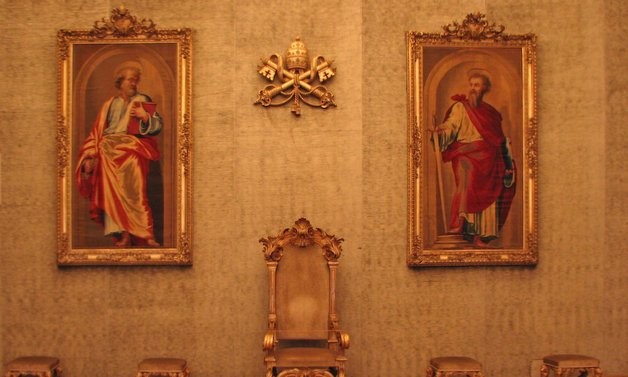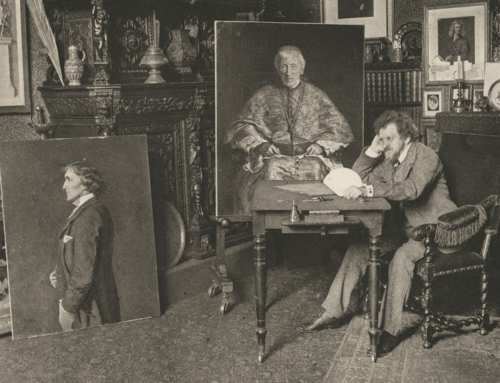We will but suggest the parallel amazement of some earnest Nazarene who had known and followed his dusty and travel-worn Master through the dry sunlight of Galilee, restored suddenly to this world and visiting, let us say, a Mass in St. Peter’s at Rome, at learning that the consecrated wafer upon the altar was none other than his crucified teacher. -H.G. Wells
A prophet keeping vigil for the dawn of world socialism, H.G. Wells’ gaze was firmly fixed on the future. The past, on the other hand, was much less reliable. C.S. Lewis famously described Christianity as the myth become fact; Wells, as might be expected, wrote it off as fairy tales.
If the Gospel is myth made fact, then the Holy Father, the Vicar of Christ, could also be considered a sort of walking myth. The secularist is simultaneously intrigued by the traditions and practices of the Papacy, while contemptuous of their purpose. The modern world is both skeptical and egalitarian: remaining hierarchies and distinctions are regularly flattened, and the authority and mystery of the past is frequently spurned. Yet these same skeptical moderns are fascinated by the ceremony and reverence that surrounds the successor of St. Peter. Why do people of this enlightened age still heed the teaching that comes from the Petrine throne?
When asked of how the laity are distinct within the ranks of the Church’s hierarchy, Bl. John Henry Newman observed that the hierarchy would look foolish without them. Imagine the absurdity of a Eucharistic procession without parishioners, or a newly elected Pope stepping out onto the balcony of St. Peter’s to bless an empty square and a vacant city. All the honors and titles of the Papacy are comprehensible only when they are understood within the Pope’s mandate to serve the Church. St. Gregory the Great understood this, taking to himself the title Servus Servorum Dei (Servant of the Servants of God) as a rebuke against the self-aggrandizing title adopted by another bishop. However, this title cannot be attributed solely to a diplomatic kerfuffle:
You know that those who are supposed to rule over the Gentiles lord it over them, and their great men exercise authority over them. But it shall not be so among you; but whoever would be great among you must be your servant, and whoever would be first among you must be slave of all. For the Son of man also came not to be served but to serve, and to give his life as a ransom for many. (Mk 10:41-45)
Although the Lord’s commission has not always been given to men who would seem worthy of it, the Chair of St. Peter remains. The Church celebrates this tomorrow, the twenty-second of February, in honoring Christ’s institution of the Petrine ministry. Our Lord was not afraid to distinguish the dignity of certain scribes’ office (and the obedience owed them) from their manifest inadequacy for the task. And so it can be with the men we invariably call “Holy Father.” As wonderful and saintly as many of them have been, this story is centered not on the white-clad figure sitting in the chair, but upon the King of Kings. It was He who entrusted that same throne to an unlikely character–a fisherman–all those centuries ago.
The earnest Nazarene postulated by H.G. Wells would likely not marvel so much at what has changed in the Church over the past two thousand years. While such wonders as St. Peter’s Basilica and Bernini’s Throne of St. Peter might come as a surprise to an early Christian, such marvels are not nearly as baffling as H.G. Well’s estimation of the Church, which, while aspiring to transcend history, amounts to a set of abstruse theories advanced by a man trapped in his own era.
✠
Image: Lawrence Lew, O.P., Lateran Throne Room (used with permission)







